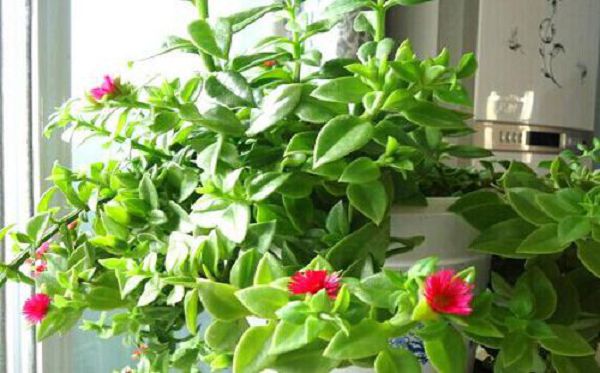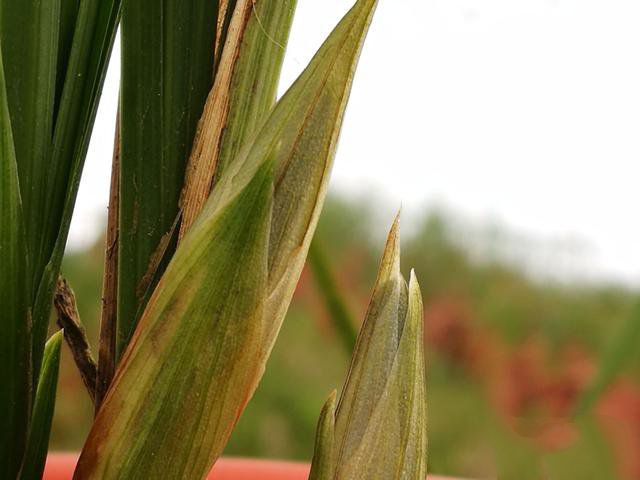When does the peony orchid blossom? What month is the flowering period of peony orchid?

Peony orchid generally refers to the heart leaf sunflower, peony orchid is the apricot family, sunflower belongs to perennial evergreen herbs. Stem obliquely recumbent, spreading, 30-60 cm long, branched, slightly fleshy, glabrous, with small granular protuberances. Leaves opposite, leaf blade cordate-ovate, flattened, apex acute or obtuse with convex tip, base rounded. So when does the peony orchid bloom? What month is the flowering period of peony orchid?
The peony orchid usually blossoms from July to August and has a long flowering period. The flowering period of the peony orchid, one is the single flowering period, the other is the whole flowering period, generally speaking, the single flowering period of the peony orchid can bloom for two or three days, bloom during the day and close at night, while the flowering period of the whole pot can last for 3-4 months, that is, from spring to autumn, it blossoms one after another, especially from July to August.
Growing environment
Heart leaf sun flowers like warm, dry, soft and sufficient light, resistant to semi-shade and drought, not resistant to waterlogging, and have a certain degree of cold tolerance. Rizhao about 50% Rizhao 70%, avoid direct light, high temperature, wet, can not be caught in the rain for a long time. April-September is its peak growing season, so it should be given sufficient light, but it still needs proper shading when it is hot in summer, so as to avoid yellowing of branches and leaves caused by hot sun exposure. But also can not be too shady, otherwise it will make the plant type loose, flowering rare, so it is best to hang in the shade shed, shade, the inside of the balcony or other places without direct sunlight maintenance, and pay attention to good ventilation, avoid muggy environment. The growth temperature is 15-25 ℃, and the growth temperature is below 5 ℃.
Distribution range
It is naturally distributed in the eastern Cape Province of South Africa, KwaZulu-Natal Province and the Limpopo River Basin. It has been introduced into China.
Reproduction method
Cuttage
Cutting can be carried out in spring, summer and autumn, especially in summer and autumn, and generally choose to be carried out in rainy season or cloudy days, and the survival rate of cutting is relatively high. Cuttings select robust plants free of diseases and insect pests, cut sturdy and substantial branches, take the middle and upper stem segments, cut them into small segments of about 12 cm, the position of the upper cut is about 1 cm above the bud, and the lower cut is 1-3 mm below the base bud. The cuttings should be hung for about 1 day after cutting, and the cuttings should be dipped in rooting powder after being dried and cut on the prepared substrate. Garden soil, sapropelic soil and perlite were mixed in the proportion of 6:3:1. When cutting, the cuttings are obliquely cut into the seedbed or nutrition bag, the insertion depth is full-length 1max 2-2par 3, and the cutting density is 3-4cm between rows. After insertion, the wound was compacted and watered, and the care was carried out according to the routine requirements. Generally, the wound healed and gradually took root after 3 weeks.
Sowing seeds
The drainage hole at the bottom of the seedling basin is covered with a tile, and the lower part is covered with 2 cm thick coarse-grained river sand and fine grained stones to facilitate drainage. When selecting seeds, first observe whether the record name is consistent with the real object, in order to determine the purity of the seed type or variety. Then select full seeds, fresh color, pure and disease-free seeds, soak in 52 ℃ warm water for 20 minutes, and constantly stir, take out and then soak in clean water for 4-5 hours, the amount of water is at least 5 times that of the seeds. Then the seeds are wrapped in a wet cloth and germinated under the condition of 28-30 ℃. They can also be mixed with 2-3 times fine sand and covered with wet cloth in an earthen basin to accelerate germination. Turn it up and down once a day. If the sand is not dry, you don't need to wash it. If you keep it for 25 ℃, you can sprout smoothly within 2-3 days.
Before sowing, the flowerpot is watered with water from the bottom of the pot. after the water seeps down, the seed is sown, cover 1 cm thick nutritious soil, and cover the mouth of the pot with newspaper or glass to prevent water evaporation and sunlight. Remove the cover at night and ventilate. Always keep the surface of the basin soil in a wet state without hardening.
Related
- Is the orchid suitable for indoor use? Is it good for the body?
- How to prevent the empty root of orchids?
- What to do after the crab claw orchid is withered?
- Why are the leaves of orchids always yellow? Fertilizing and watering.
- Can the root of the gentleman orchid be saved if it is rotten?
- Diagnosis and treatment of cotton-blowing beetle insects in Cymbidium
- There is a way for a gentleman's orchid to rot.
- What is the most suitable temperature and humidity for the orchid?
- How to raise a gentleman's orchid? Cultivation techniques of Cymbidium
- How to prepare the nutritive soil for the cultivation of Cymbidium



